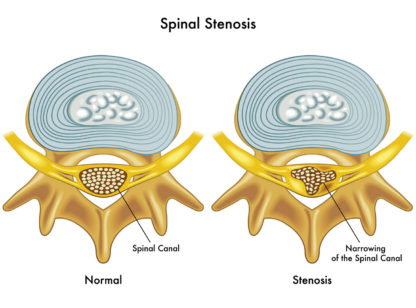Low back pain is the most common type of pain experienced by people in the United States. It contributes significantly toward growing health care costs and over utilization of the medical system through invasive surgeries and prescription pain medication. Patients with low back pain that is acute and chronic are routinely referred for extensive diagnostic tests or given opioids as the first line of action.
There is a growing body of evidence that indicates persistent low back pain is influenced by social, psychological and emotional factors along with biological. In many cases, patients with chronic low back pain associate their pain with damage and injury to their spine and develop a belief that reinforces and promotes a fear and avoidance of activities that result in pain. This indicates that a treatment plan should be different for each individual with their mindset, activities and goals taken into consideration to effectively formulate a therapy program that will set them up for success and improve their quality of life.
Clinical procedure guidelines for low back pain clearly state that non-specific and non-life threatening cases should be treated conservatively with non-pharmacological therapy including exercise, interdisciplinary rehabilitation and cognitive behavioral therapy.1 A 2015 report by Fritz, Brennan and Hunter found that patients with low back pain whose primary care provider referred them for conservative treatment such as physical therapy, experienced less invasive surgery, injections, emergency department visits and lower healthcare costs.2 It is important to note that non-specific low back pain is a self-limited condition that self-resolves in the majority of patients through exercise and therapy which can help hasten the recovery process.
One of the primary factors for patients of all ages is maintaining core strength which can prevent and resolve ongoing back issues. Recommended practices include yoga, Pilates, weight training, hiking and walking. It is important to understand that regular physical exercise of any kind will help manage low back pain.
A sedentary lifestyle, weight gain, sitting in a sustained posture for more than 25 minutes, daily repetitive movements and sudden lifting of heavy items without using your leg muscles (the strongest muscles in your body) are some of the many factors that contribute to the onset and continuation of low back pain.
Factors such as stress (emotional and physical), sleep deprivation, mental health, poor nutrition and social isolation can affect a patient’s perception of pain experience and may prolong recovery. It is essential to consider all of these factors when confronting and overcoming low back pain symptoms.
When treating patients for low back pain, I always reinforce the concept that “motion is lotion for the body” and their treatment does not stop at the clinic, but must continue through their daily movement patterns and exercise. This will allow them to get back to enjoying their greatest quality of life.
Zainab Kothari is a Doctor of Physical Therapy at Avid Physical Therapy and can be contacted at [email protected] (760) 202.0368.
References:
1) Annals of Internal Medicine. https://annals.org/aim/fullarticle/736814;
2) https://www.ncbi.nlm.nih.gov/pubmed/25772625









































Comments (2)
I could not agree more. Thanks for the reassuring article.
Thank you for reading, Roger!
With sincere appreciation ~
Lauren Del Sarto
Publisher